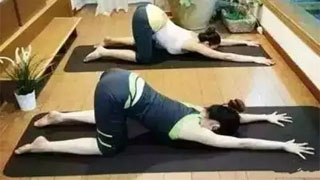
There are various methods for exercise and health preservation, which should be tailored to each person, time, and location. Children and adolescents are in the stage of growth and development, especially pure yang juveniles, with soft and tender body muscles and their own physiological and psychological characteristics. They should choose sports with certain fun, such as kicking shuttlecock and skipping rope. Women are inferior to men in strength, endurance, and other aspects, while they are superior to men in balance, flexibility, and other aspects. When choosing sports, it is important to understand their different characteristics.
The physical decline of the elderly results in aging in both physiological and organizational structures. Therefore, exercise should not be too intense, too difficult, or too long. Even well-trained and physically strong elderly people should consider not doing too much, too difficult, or too much exercise. It is best to choose sports that can move all joints and muscle groups of the body, such as Tai Chi, Tai Chi Sword, and elderly health gymnastics.
Exercise and health preservation must master the amount of exercise and emphasize moderation. If the measurement cannot be achieved, the effectiveness will be small; Excessive measurement can actually be detrimental to the body. So, how do you control your optimal amount of exercise?
02 should arrange their exercise time appropriately. Generally speaking, once a day in the morning and once in the evening, for about an hour each time. If exercising before meals, rest for at least half an hour before eating; After meals, take a break. It takes more than 5 hours to exercise. To avoid overexcitement after exercise and affect sleep, exercise should be ended about 2 hours before bedtime. In addition, exercise and health preservation should also choose a suitable environment.
It is best to have a flat and barrier free venue, such as on fresh air green grass, or on sports fields, squares, parks, balconies, which can all be used as sports venues. But there are several points to note:
(1) Places with environmental pollution, areas with flying smoke and dust particles, and noisy roadsides are not suitable as exercise venues.
(2) Do not exercise under the scorching summer sun to prevent heatstroke.
(3) Do not exercise in heavy fog, as there are a large number of small water droplets suspended in the fog. These droplets contain harmful substances such as benzene, phenols, amines, and some pathogenic microorganisms, which can cause significant air pollution.
According to measurements, dust particles ranging from 0.5 to 5 microns can directly reach the alveoli of the human body and deposit, causing an increase in pulmonary artery pressure. In foggy weather with high humidity in the air, exercising at this time often causes discomfort throughout the body due to insufficient sweating.
03 can be mastered through self perception: firstly, the feeling of fatigue, which is a signal to protect health. Excessive fatigue indicates excessive exercise, so it should be measured as feeling slightly tired but not too tired; Secondly, sweating is necessary for physical exercise.
Sweating like washing indicates excessive physical activity; If there is no sweating or no heat sensation on the body, it indicates insufficient exercise. So it is best to have a warm feeling or slight sweating on the body. In short, after exercise, if the exerciser's appetite increases, they sleep well, feel refreshed and energetic, and even if they increase their exercise intensity, they do not feel tired, it is a manifestation of appropriate exercise intensity.
If there is a decrease in appetite, dizziness, headache, mental fatigue, and weakness after exercise, it indicates excessive physical activity and should be reduced accordingly.


